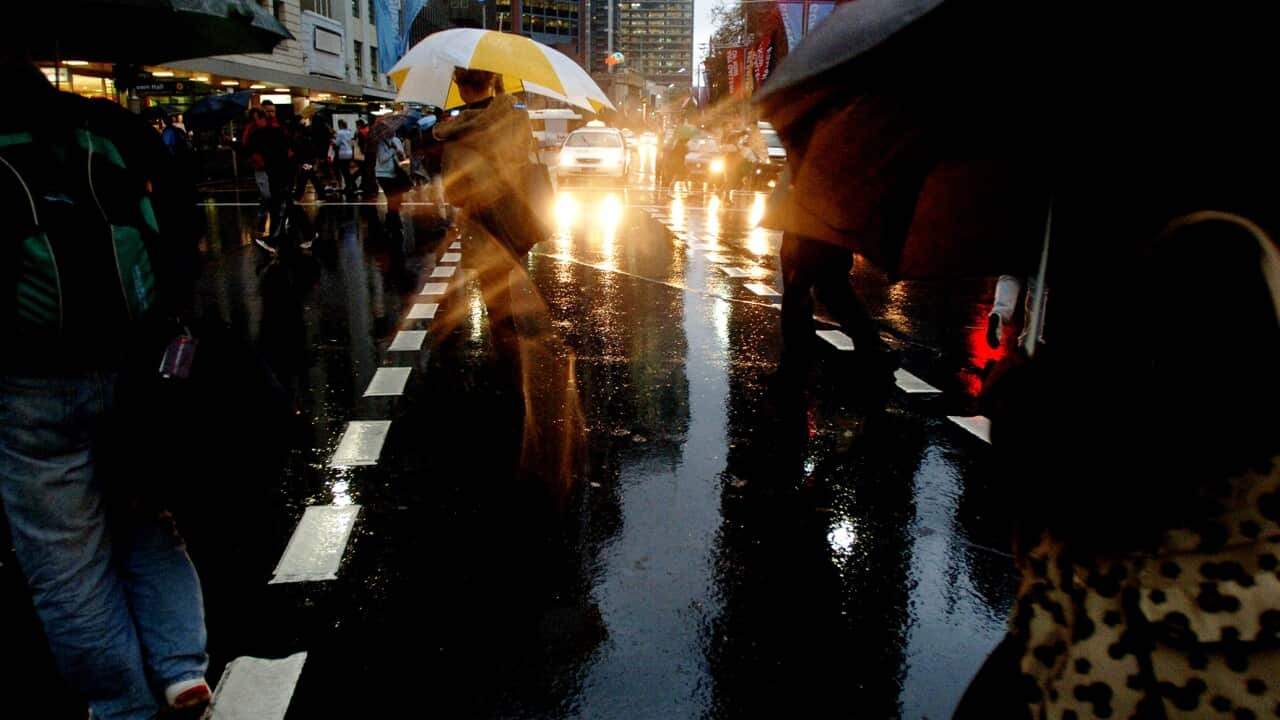Melting icecaps, warming seas and rising water levels – the conversation around climate change often centres around its environmental effects.
What is often overlooked, however, is the way climate change will affect our everyday lives on a personal basis.
Effects are already being felt in places like the Pacific, where
Here are four ways climate change could affect your everyday life.
Some parts of the world will experience food shortages
While places like northern Europe may enjoy longer growing seasons as weather patterns change, the overall global production of staple crops like corn, wheat, rice and potato is expected to drop by 2050, the same year the world’s population is set to reach . The shortfall in food could have tragic consequences: suggests that inadequate food and nutrition could result in 529,000 deaths by 2050.
The effects of climate change are already being felt in Australian agriculture. has found that while productivity in wheat farming has increased over the last 25 years, yields have stalled due to reduced rainfall and warmer average temperatures. In 20 years from now, those yields are expected to go into decline.
While Australia’s large agriculture industry may save us from running out of food, global shortages will drive up the price of staples making a trip to the supermarket more expensive.
Our travel plans will change
For most of us, diving on the Great Barrier Reef is a bucket list adventure. But as large scale bleaching kills off huge tracts of the reef, with little hope of recovery in our lifetime, finding Nemo will be a thing of the past – bad news for the tourism industry.
The Dead Sea, the body of water bordering Israel, the West Bank and Jordan that occupies the earth’s lowest point, is due to increased evaporation.
In New Zealand, the spectacular Southern Alps glaciers are retreating at record levels, making them increasingly unsafe for tourists, while in South America, changing rainfall patterns could upset delicate ecosystems in the Amazon jungle and the rivers and estuaries that run through it.
Travel to certain parts of the world could become off limits due to the spread of disease. An outbreak of the in 2015-16 spread throughout the Americas as the distribution of mosquitoes that carry the virus changed with the climate. Suddenly that lifelong dream of travelling to Rio became a less attractive prospect.
We will experience more extreme weather events more often
The threat of bushfire is a terrifying part of Australian life, especially in Victoria, ravaged by Black Saturday fires in 2009. A has found that climate change is increasing the length of Victoria’s bushfire season. Hotter and longer heatwaves mean more extreme fire danger days, and as Melbourne extends further into traditional bushland areas, more people and property are exposed to the risk of bushfire. As well as the threat to human life, bushfires come with an enormous price tag. The annual cost of bushfires to Victoria’s economy is $180 million, a figure expected to rise to $378 million by 2050.
But it’s not just fires that will become more frequent. Storms like the one that in December 2016 will become more common with the increasing unpredictability of the weather. Expect to see more floods on par with the 2011 Queensland deluge () that claimed the lives of at least 38 people and cost the national economy over $2 billion.
Global politics will become more unstable
Terrorism is often held up as the threat we should fear most, but what happens if it’s climate change that poses the greater risk to our prosperity?
The Age of Consequences, a film broadcast on ABC’s , links the effects of climate change with global instability. Climate change-fuelled droughts, failed crops and food shortages are often underlying factors that contribute to conflict. In Syria, one of the worst droughts in living memory preceded the outbreak of civil war in 2011. Millions of people displaced by drought, combined with rising unemployment and cost of living created a tinderbox of discontent, capitalised upon by groups like ISIS.
But bread riots are nothing new. Just as protestors took to the streets in Egypt in 2011 calling for bread and freedom, in the eighteenth century, failed crops caused by drought led to bread riots that sparked the French Revolution.
Conflict, drought and the changing climate results in more refugees. Over have fled Syria. In Bangladesh, river erosion renders 200,000 people homeless every year. Each year, an average of , a number sure to rise as wild weather events become more frequent.
Three things you can do to reduce your carbon footprint today
Per capita, Australians are among the , which means there is a lot we can do to reduce our collective carbon footprint.
- Eat smaller portions of red meat less often. Chicken, fish and lentils are less energy-intense alternatives.
- Switch to LED light bulbs, which use than traditional incandescent bulbs.
- Reduce your use of plastics and say no to single use items like bottled water, disposable takeaway coffee cups and plastic bags.
Earth Hour will take place on Saturday 25 March 2017. For details about the worldwide movement and local events,
Love the story? Follow the author here: Twitter @nicoheath

